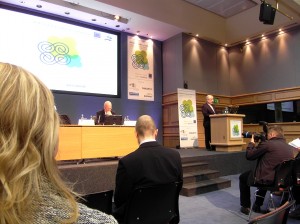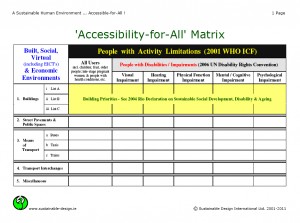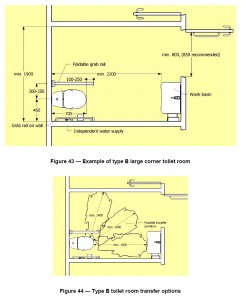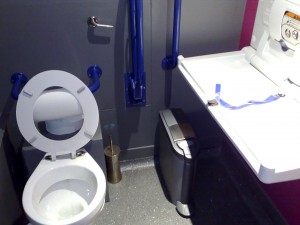2012-11-27: On Friday last, 23 November 2012, I had the great pleasure of being invited to attend the 2012 IIEA/TEPSA Irish EU Presidency Conference, which was held in Dublin Castle, Ireland. The Programme was interesting and diverse … but lacked a vital element …
- Session 1 – Priorities of the Irish EU Presidency ;
- Session 2 – Economic Governance & Economic Monetary Union ;
- Session 3 – Innovation & the Digital/Energy Interface ;
- Session 4 – The European Union in the World.
[ IIEA – Institute of International & European Affairs ] + [ TEPSA – Trans-European Policy Studies Association ]

Although the serious problem of Youth Unemployment in Europe was discussed (from an economic perspective), and the Ageing Society received a passing mention … there was hardly any consideration of EU Citizenship and the many other Soft Social Issues … with, surprise-surprise, no reference at all to the Weak and Vulnerable Groups of People in all of our countries.
Furthermore … I don’t know whether they were invited to the Dublin EU Presidency Conference … and if they were, whether they couldn’t attend … but I did not notice a significant presence of representatives from Irish Disability Organizations at this important event.
Conference Delegates needed to hear that the European Union is for All of its People … not just its Citizens ! That distinction is critical.

.
Which sets the scene, in an odd way, for the following e-mail message I recently sent through the EUropean Concept for Accessibility Network (EuCAN) … a network of European Accessibility Experts, co-ordinated from Luxembourg by Mr. Silvio Sagramola …
.
To EuCAN Network Members:
Silvio,
With some concern, I have been following the discussion about Access Officers.
Allow me to explain.
Once upon a time … at a meeting of the EuCAN Management Team in Luxembourg … there was an intense discussion about ‘Accessibility & Human Rights’. Now that the U.N. Convention on the Rights of Persons with Disabilities has been adopted, entered into force, and been ratified by the European Union and many, though not all, of the EU Member States … I hope that this issue has finally been resolved.
Therefore … the immediate, Pan-European Accessibility Agenda can be found in Articles 9, 11 and 19 of the Convention … all within the context of Preamble Paragraph (g).
BUT … is any organization yet working with this Agenda … and, most importantly, implementing it properly ?
AND … let us not forget that Independent Mechanisms to Monitor Implementation are an essential component of the same Agenda (Article 33.2) … at European, national, and sub-national levels, right down to individual public and private organizations !
.
Accessibility has been clearly specified in the new International Standard ISO 21542: ‘Building Construction – Accessibility & Usability of the Built Environment’ as including … ‘access to buildings, circulation within buildings and their use, egress from buildings in the normal course of events, and evacuation in the event of an emergency‘.
The flawed framework, founded on the term ‘Access’ alone, is now obsolete. And, therefore, the Access Officer is no more. Let us all finally agree that the responsible individual, whether he or she, is an Accessibility Officer !
.
If the EuCAN Network is to have a useful and constructive future, this is the New Legal & Normative Environment which it must confront, carefully examine … and, in support of which, it should produce design guidance, decision-making computer software tools, etc., etc … for the practical purpose of ‘real’ implementation.
AND … any proposed EuCAN Programme of Action (2013-2015) should also include a review and updating of past publications.
.
Some Points To Note:
1. Although the European Union ratified the U.N. CRPD on 23 December 2010 … European Commissioner Viviane Reding (Justice, Fundamental Rights & Citizenship) stated at a Dublin Meeting, in answer to my direct question, that some Member States are offering stiff resistance to integration of the Convention into the EU System. Why isn’t the European Disability Forum on top of this ? But also … the European Union has not yet either signed, or ratified, the Convention’s Optional Protocol.
2. At the time of writing … Finland, Ireland, the Netherlands, and Norway (EEA) … have still not ratified the Convention. Why not ? Where is the outcry from disability organizations in those countries ??
In Ireland, unfortunately, national decision-makers would rather commit ritual suicide outside government buildings than acknowledge an individual citizen’s human rights. And, if Ireland ever does ratify the Convention, proper implementation will be very problematic.
Am I exaggerating ? Not at all … just look at how Ireland has implemented the U.N. Convention on the Rights of the Child, which it ratified back in September 1992.
3. In EU Member States that have ratified the U.N. CRPD … the Convention is not always being implemented properly.
Towards the end of the following Blog Post … https://www.cjwalsh.ie/2011/10/public-procurement-design-for-all-its-crunch-time-folks/ … I have discussed the Concluding Observations on the Initial Report of Spain (September 2011 Session of the U.N. Committee on the Rights of Persons with Disabilities).
4. Preamble Paragraph (g) of the U.N. CRPD is even more important, now, for this reason … the United Nations has started to develop the Post-2015 Sustainable Development Goals. It is essential to fully integrate Ability/Disability Issues into this process. Making a submission to the U.N. could be an interesting task for EuCAN.
5. The Fire Safety Texts contained in ISO 21542 are essentially just a bare minimum … and they are mostly in the form of recommendations (‘should’), not requirements (‘shall’). There is a great need to add extra detail to those texts … and to convert them into requirements. Making a series of submissions to the International Standards Organization (ISO) should be a task for EuCAN.
Regards.
C.J. Walsh, Sustainable Design International Ltd. – Ireland, Italy & Turkey.
.
.
EUropean Concept for Accessibility (EuCAN) – Extract from 2001 Mission Statement
The fundamental basis of a European philosophy for accessibility is the recognition, acceptance and fostering – at all levels in society – of the rights of all human beings, including people with activity limitations … in an ensured context of high human health, safety, comfort and environmental protection. Accessibility for All is an essential attribute of a ‘person-centred’, sustainable built environment.
An Effectively Accessible Europe for All
Now that a Comprehensive Legal and Normative Environment for Accessibility has finally been created in Europe … there is a vital need for EuCAN for serve … and a vital role for EuCAN to play.
However … Concerted Action must be directed at Implementation … Effective Implementation … ‘real’ accessibility which works.
Enough talk – Enough tokenism !!
.
.
END








